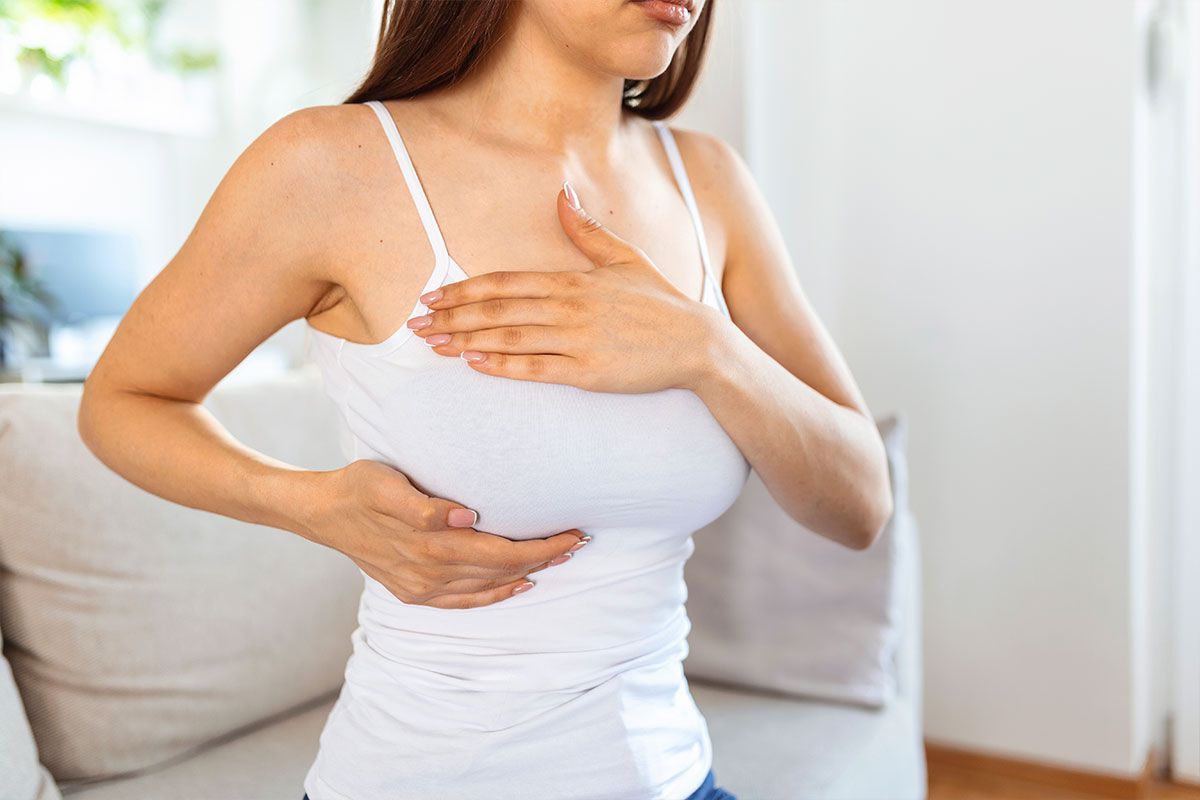
Breast health is something every woman should take seriously, and one of the simplest ways to stay on top of it is through regular self-examination.
While not every lump in the breast is cancerous, checking your breasts regularly helps you notice changes early and seek medical advice when necessary. In fact, experts stress that early detection can make a huge difference in successful treatment outcomes.
The Breast Cancer Research Foundation (BCRF) notes,
“Early detection remains the most important factor in breast cancer survival. When breast cancer is caught early, the five-year survival rate is nearly 100%.”
So, how exactly do you check for breast lumps? Here’s a detailed step-by-step guide.
READ ALSO: 10 common breast cancer signs that you should never ignore
Why Self-Examination Matters
Breast self-exams (BSE) are not a replacement for medical screenings like mammograms, but they are a powerful first line of awareness. By getting familiar with the look and feel of your breasts, you’re more likely to notice subtle changes, not just lumps, but also swelling, dimpling, or unusual discharge.
According to the American Cancer Society, most breast changes are not cancer, but it’s always better to get anything unusual checked. Self-exams give you confidence and control over your own health.
When to Perform a Breast Self-Exam
The best time to perform a self-exam is about 3 to 5 days after your period starts, when your breasts are least likely to be swollen or tender. If you no longer have periods, choose a consistent date each month, for example, the first of the month.
Consistency is key. Checking your breasts monthly helps you establish what is “normal” for you and makes it easier to notice any changes.
EXPLORE MORE: The best sleeping positions to prevent sagging breasts
Step-by-Step Guide On How to Check for Breast Lumps
1. Begin with a Visual Check in Front of a Mirror
-
Stand with your shoulders straight and your arms on your hips. Look at your breasts in the mirror.
-
Check for any visible changes: size, shape, colour, dimpling of the skin, or nipple changes (like inversion or discharge).
-
Raise your arms above your head and check again from a different angle.
Note: Subtle changes like skin puckering or redness are just as important to note as lumps.
2. Check While Standing or in the Shower
-
With your right hand, examine your left breast; with your left hand, check your right.
-
Use the pads of your three middle fingers (not fingertips).
-
Move your fingers in a firm, smooth, circular motion, about the size of a coin.
-
Cover the entire breast, starting from the collarbone down to the top of your abdomen, and from the armpit to the cleavage.
There are three common patterns you can follow:
-
Circular motion: Start from the outside and move inward in circles until you reach the nipple.
-
Vertical strips: Move your fingers up and down vertically.
-
Wedges: Start at the nipple and move outwards in wedge-shaped sections.
Whichever method you choose, just make sure you cover the whole breast area, including the armpit
SEE THIS: Did you know breast cancer affects men too? Here’s how
3. Check While Lying Down
When you lie down, breast tissue spreads evenly across the chest wall, making it easier to feel for lumps or thickened areas. Here’s how to check:
-
Lie on your back with a pillow under your right shoulder and your right arm behind your head.
-
Use your left hand to examine your right breast in the same circular or strip pattern.
-
Switch sides and repeat.
What You’re Looking For
Not all changes are lumps, but here are the main things to watch out for:
-
A hard lump or knot, especially one that feels different from surrounding tissue
-
Thickening or swelling in part of the breast
-
Changes in the shape or size of the breast
-
Skin dimpling or puckering
-
Redness, rash, or warmth
-
Nipple discharge (especially if bloody or clear, not milky)
-
Pain or tenderness in one spot that doesn’t go away
RECOMMENDED: How often should women go for a full body check-up?
What to Do If You Find a Lump
First, don’t panic. Many lumps turn out to be benign cysts, fibroadenomas, or other non-cancerous conditions. Schedule an appointment with your doctor for evaluation. They may recommend:
-
A clinical breast exam
-
Imaging tests like a mammogram or ultrasound
-
A biopsy, if necessary
Do not self-diagnose. Early evaluation saves lives.
When to See a Doctor
If you notice any of the above, it doesn’t automatically mean cancer. Most breast lumps turn out to be benign (non-cancerous), often due to hormonal changes, cysts, or fibroadenomas. Still, only a doctor can determine what’s normal and what needs further testing.
Medical Screenings You Shouldn’t Skip
While self-exams are helpful, they are not a substitute for professional screenings. Depending on your age and risk factors:
-
Women in their 20s–30s should have a clinical breast exam by a doctor every 1–3 years.
-
Women over 40 should discuss with their doctor about starting annual mammograms.
-
If you have a family history of breast cancer, your doctor may recommend earlier or more frequent screening.
Doing regular breast self-exams is about knowing your body and taking charge of your health. It only takes a few minutes each month, but it can make a huge difference in catching changes early. Remember, early detection saves lives.
If you ever feel unsure about what you’ve found, don’t delay. Trust your instincts and speak with a medical professional.
